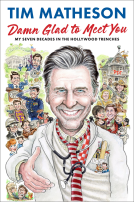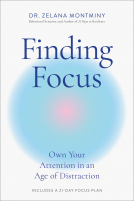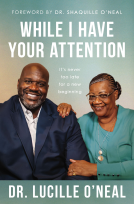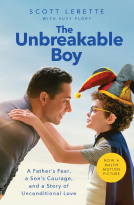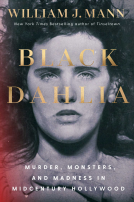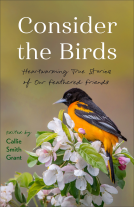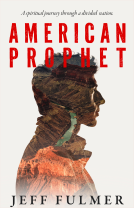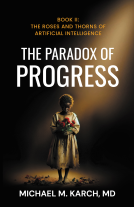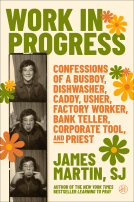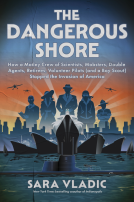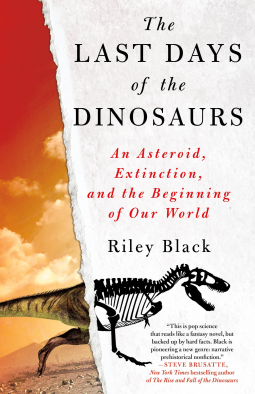
The Last Days of the Dinosaurs
An Asteroid, Extinction, and the Beginning of Our World
by Riley Black
This title was previously available on NetGalley and is now archived.
Send NetGalley books directly to your Kindle or Kindle app
1
To read on a Kindle or Kindle app, please add kindle@netgalley.com as an approved email address to receive files in your Amazon account. Click here for step-by-step instructions.
2
Also find your Kindle email address within your Amazon account, and enter it here.
Pub Date Apr 26 2022 | Archive Date May 03 2022
Description
Winner of the AAAS/Subaru Prize for Excellence in Science Books!
"This is top-drawer science writing." —Publishers Weekly, starred review
In The Last Days of the Dinosaurs, Riley Black walks readers through what happened in the days, the years, the centuries, and the million years after the impact, tracking the sweeping disruptions that overtook this one spot, and imagining what might have been happening elsewhere on the globe. Life’s losses were sharp and deeply-felt, but the hope carried by the beings that survived sets the stage for the world as we know it now.
Picture yourself in the Cretaceous period. It’s a sunny afternoon in the Hell Creek of ancient Montana 66 million years ago. A Triceratops horridus ambles along the edge of the forest. In a matter of hours, everything here will be wiped away. Lush verdure will be replaced with fire. Tyrannosaurus rex will be toppled from their throne, along with every other species of non-avian dinosaur no matter their size, diet, or disposition. They just don’t know it yet.
The cause of this disaster was identified decades ago. An asteroid some seven miles across slammed into the Earth, leaving a geologic wound over 50 miles in diameter. In the terrible mass extinction that followed, more than half of known species vanished seemingly overnight. But this worst single day in the history of life on Earth was as critical for us as it was for the dinosaurs, as it allowed for evolutionary opportunities that were closed for the previous 100 million years.
"This is pop science that reads like a fantasy novel, but backed up by hard facts and the latest fossil discoveries. Black is pioneering a new genre: narrative prehistorical nonfiction." —Steve Brusatte, New York Times bestselling author of The Rise and Fall of the Dinosaurs
Available Editions
| EDITION | Other Format |
| ISBN | 9781250271044 |
| PRICE | $28.99 (USD) |
| PAGES | 304 |
Average rating from 40 members
Featured Reviews
 megan C, Educator
megan C, Educator
This book escapes the trap of an overly dry nonfiction book and keeps you engaged in the fascinating science of this phenomenon without being condescending or too advanced for non-experts. If you’re interested in the topic of the extinction of the dinosaurs at all, you’ll definitely learn a lot and enjoy this well-written book full of new information and explanations!
I enjoyed many aspects of this book. The topic is fascinating and the chronological structure is interesting. Some of the wording is very clever and there is some humor in the book. The best aspect of the book is discussing topics from the animal’s point of view, sort of like an animal diary. However I found the attempts at literary writing interfered with the rhythm of my reading. I also found the conclusions and personal ruminations far too long. I did not find that I had developed a relationship with the writer, as I have in many other non-fiction books, and hence the personal thoughts at the end did not resonate with me. Overall though, this is a book well worth reading. Thank you to Netgalley and St. Martin's Press for the advance reader copy.
When I saw the topic of this book, I thought it would be fascinating–and it was. Usually the story of the dinosaurs and the impact that erased them from the Earth ends that one fateful day. But this book explores what happened after. I liked how the chapters are certain periods of time after the event.
It’s a compelling read. The author makes you feel like you’re right there with the dinosaurs and the animals and plants that come after. She does a great job of bringing them to life. If your idea of a non-fiction book is dry and boring, this isn’t it.
In the end, it’s a story about the resilience of life. It wasn’t just non-avian dinosaurs that were doomed that day. All life on our planet was pushed to the brink. But it paved the way for the rise of mammals, and us.
There’s a significant appendix in the back if you want a deep dive into the nitty gritty. I enjoyed this book immensely, enough to seek out more of her writing. Thank you to NetGalley and St. Martin’s Press for my copy.
I cannot say enough for how wonderful this book is!! Riley is an amazing writer and has a knack for capturing a non-fiction book in an adventure novel net. I cannot wait to get my hands on a physical copy of this book and relive all the dino goodness that this piece brought!!! I must for non-fic readers!!
 George S, Media/Journalist
George S, Media/Journalist
Wow, this is really good! Not a dry, overly complex trudge, but instead a vivid and compelling account about the cataclysmic end of the dinosaurs and the aftermath and the drastic changes that ensued. This is like reading a page-turning novel.
 Rosemary S, Librarian
Rosemary S, Librarian
There are two kinds of people in the world – people who love dinosaurs and people who don’t. Being in the former camp, I was eager to read this book told from the dinosaur’s point of view about their reign and eventual extinction from earth. While some have described this book as childish, I found it to be an enjoyable romp through the Cretaceous Period. Dinosaurs for the layperson, not the scientist.
 Annette J, Reviewer
Annette J, Reviewer
This book is about an extinction level event that destroyed the dinosaurs. I thought the book started out really good and interesting. After about more than half way through it becomes boring. The author talked about being transgender. I’m not sure what that had to do with the dinosaur extinction. It seemed a rather unnecessary inclusion. For the most part I enjoyed the book. I think maybe the author could have included a picture of the dinosaurs she was talking about. It would have added to what was happening.
Thanks to the publisher and Netgalley for the early copy
 Sierra B, Reviewer
Sierra B, Reviewer
Riley Black is quite possibly the most influential name amongst queer aspiring paleontologists, so I was extremely excited to read this book. As a paleontology student, I absolutely love studying mass extinctions, so my expectations couldn't have been higher. I was super impressed by the whole book. I thought the idea of writing from the animals' perspective could've easily gone wrong, but she struck exactly the right tone. The pacing was great (although I expect that that others will care more about the dinosaurs themselves and less about what came after), and after reading the appendix, I think she struck the perfect balance between established facts and a little bit of guessing. Also, I loved how readable the appendix was. The conclusion focused more on the author's personal story, which I thought didn't work as well - I'd rather she write a whole memoir, and it didn't fit well into this book.
 Reviewer 201788
Reviewer 201788
Another catastrophic climate event you’re probably more aware of is the fallout from the asteroid that led to the extinction of the dinosaurs. In the upcoming The Last Days of the Dinosaurs: An Asteroid, Extinction, and the Beginning of Our World (April 26, St. Martin’s), paleontologist Riley Black examines those final moments and the ensuing aftermath after the next centuries.
The asteroid itself of course wasn’t the climate change event (my husband’s favorite T-shirt is one that reads “Dinosaurs didn’t have a space agency”), but the ensuing changes from the massive impact created climate changes that were incompatible with the dinosaurs’ way of life, whether for reasons of temperature, air quality, or the continued existence and quantity needed of their food sources.
Black takes a narrative approach to this topic, in a way that reminded me of Rachel Carson in The Sea Around Us, looking at the events of these days from the perspectives of different dinosaurs, including T-Rex and ankylosaurus. They center this view on the changing world from within Hell Creek, Montana, 66 million years ago during the Cretaceous period. Black paints a vivid picture of exactly how the world looked, felt, and smelled, and sounded at that exact moment, then builds on these elements as they changed, first on the most minute level from the moments when the asteroid hit and gradually expanding further along the timeline.
In an addendum, Black reviews what was speculation on their part and what’s definitively known. They also look at some of the shifts in scientists’ theories around the event that caused the dinosaurs’ extinction and created an opening for the subsequent rise of mammals.
I had some difficulty staying engaged throughout but I think that was personal — the writing is clear and geared towards being understood by a general readership. And I did learn a lot, although without a lot of foundation here I’m not sure how much would be new to other readers. Any new scholarship around this period feels worth reading to me though, since as Black points out several times, events are still disputed among experts and new fossils and information frequently come to light that change our understanding of how things played out and the behaviors of the dinosaurs.
3.5 stars
This is a science book but it doesn’t read like a textbook! There is a ton of information but I feel like it was given in a manageable way. Following different animals as they experience the effects of the impact was a really interesting take.
I was most interested in the dinosaurs. Once they were gone and the focus was on plants and small small creatures, my reading speed slowed. I wish there were more visuals (reading from ARC). More maps and even drawn up images of the animals mentioned would have helped me out.
I really liked the conclusion- relating everything back to how it effects us as humans brought a personal touch.
*Jurassic Park references for the win!*
⭐️ I have a background in Geology and spent time writing a paper on the evolution of the Tyranosaurous family. Material was still understandable.
Special thanks to Netgalley and St Martin’s Press for this digital ARC.
 Kim C, Educator
Kim C, Educator
The Last Days of the Dinosaurs is a look at the great extinction event that led to the eventual rise of mammals. The dinosaurs ruled the earth until the asteroid struck and caused a worldwide catastrophe. This book tells the story from their perspective. It’s an entertaining way to learn about dinosaurs.
I really never did much reading about dinosaurs before, so it was very interesting to me to see what transpired 66 million years ago. The book shows dinosaurs of various species just going about their day, doing things they did every day, when suddenly, a huge impact changed the planet forever. The story begins on the day of the impact. We watch several animals doing their normal routine. Once the impact happens, the story switches to showing how various species reacted. Some of them had to go to great lengths to survive until conditions improved. Then, we check in again at various intervals until a million years after the impact. It’s a great way to tell the story and allows the author to introduce us to many species along the way.
The last part of the book tells how the species were chosen and what their stories are. Some of the archaeologic finds are explained. The author tells us why some species have more depth to their background stories, etc. (i.e. there was more or better fossil evidence for some species.)
All in all, a very entertaining look at dinosaurs and what caused their extinction, told in a storytelling format, as if you were sitting around a campfire listening to someone talk. It is not overly heavy on scientific terms, so it is a book accessible to all audiences.
 Reviewer 725763
Reviewer 725763
This book provides a unique perspective on the K-Pg extinction. It offers a sort of "day in the life" experience of individual animals before and after the impact event—what the world looked like in the late Cretaceous, the horrors of the devastation, and how life recovered. It's a well-researched story of loss and hope, of how the worst day in the history of life on earth eventually led to the world as we know it.
Thanks, NetGalley, for the ARC I received. This is my honest and voluntary review.
 Nataliya C, Reviewer
Nataliya C, Reviewer
“Beginnings need endings, a lesson that we can either hold carefully or that we can deny until it finds us.”
Sixty-something million years ago the world irrevocably changed. One day enormous colossal herbivores and carnivores a.k.a. T. rex and Co. rule the world, shaping itself their needs and creating an ecosystem in which the world of the Cretaceous era thrives. The next day that world is mostly gone, the fascinating prehistoric monsters dead and the world eventually becoming the place for mammals, with only tiny feathered dinosaurs — yes, think about that next time a pigeon poops on you, and a hummingbird is an ex-dino just like a chihuahua is an ex-wolf — living on, while their mighty cousins whose skeletons are breathtaking and majestic and command our imagination remained trapped forever behind the Cretaceous–Paleogene (K–Pg) boundary.
“In a matter of hours, everything before us will be wiped away. Lush verdure will be replaced with fire. Sunny skies will grow dark with soot. Carpets of vegetation will be reduced to ash. Contorted carcasses, dappled with cracked skin, will soon dot the razed landscape.”
The story of how we got there is often in the minds of many summarized as such: “Often, this is about as far as the discussion goes: an immense rock smacked into the planet and myriad species were summarily snuffed out. Simple as that.” Riley Black decided to give us the details - the infrared pulse, the infernal fires, the impact winter, the acid rain, and how it may have affected different dinosaur species and why.
“This time, the great rock is going to hit. It’s not going to get bumped off course by another asteroid. It’s not going to burrow into Mars and crack the Red Planet’s dry surface. It’s not going to slam into the orbiting moon, as many other rocks have, making lunar seas and craters. Out of millions of potentially deadly rocks, this is the one. This is the accident that will exact an awful toll on Earth’s species, but without malice or vengeance. It’s both end and beginning, a period that will punctuate the Earth and create a stark dividing line between the seemingly endless Age of Reptiles and the fiery dawn of the Age of Mammals.”
————
“The battle for life on the first day of the Paleocene is won and lost by little more than biological threads. Only those organisms that are able to find shelter—below the ground, beneath the water—have any chance. All others, from the largest Edmontosaurus to the smallest insect, perish. There is no behavior that can save them. Evolution prepared them for the world of tomorrow, and perhaps the day after, but not for this.”
Black focuses not just on the catastrophe but on the interplay between the species since the ecosystems are all about the links between the organisms. She does it in an almost nature documentary style, bringing the point of view of one creature, then another and so on (and explaining her reasons for making certain choices in the chapter notes in the end, that are almost a long as the book itself). Dinosaurs in the before and during the asteroid strike, the survivors - birds, turtles, crocodiles - shortly after, and early mammals in the hundreds of thousands to a millennium after. The end of one era and the beginning of another.
“The mass extinction at the end of the Cretaceous isn’t just the conclusion of the dinosaurs’ story, but a critical turning point in our own. We wouldn’t exist without the obliterating smack of cosmic rock that plowed itself into the ancient Yucatán. Both stories are present in that moment. The rise and the fall are inextricable.”
Life is tenacious, and extinction for some allows another to take the niche freed because, as we see, sometimes pure luck and happenstance equip some to deal with the end of the world as they know it just a bit better than the less lucky ones. We ultimately are the benefactors of that one stray asteroid. T. rex and buddies were less lucky, those majestic doomed monsters.
So it goes.
“This is not a monument to loss. This is an ode to resilience that can only be seen in the wake of catastrophe.”
I liked it. I liked the clear palpable love and enthusiasm Riley Black has for that period of history that ended so abruptly and brutally. I liked how well she captures those imaginary points of view of different creatures. I even liked the very long chapter notes where she explains things that were too much to put in the main narrative. It’s very accessible and interesting and clearly a work of love.
“No species is an island. No species is a discrete and complete package by itself. A species is an expression of the interaction between organisms in its environment. […] Any organism is a node that is bound to and reliant on the others around it, whether there is any direct interaction between them or not. The actions of even one organism affect others, which affect others still, entire unseen webs of possibility that pulsate through each vital moment—the thread of life itself.”
Thank you to NetGalley and the publisher for this ARC. This is, hands down, the best nonfiction I’ve read in two years. The author’s voice is authoritative (and points to more sources) but it’s the narrative that really gives this it’s power. You see and smell and hear the changes of a world effected by a killer asteroid. Also, this is really two books in one. It draws on the latest science to bring the dinosaurs alive in their glory, but it is also a story of how Earth - and we - came to be in the wake of the loss of these creatures. Fun and educational - highly recommended!
So, this is a very long enthusiastic review, which got a bit away from me, so here’s the short version: this book is amazing, and if you love dinosaurs and prehistoric creatures, you need to read it. If you don’t, read this book, and you’ll grow to love them! It will reshape your fundamental understanding of dinosaurs, the rise of mammals, and the very nature of life and ecosystems on this planet.
Like many people, I loved dinosaurs and prehistoric animals as a kid. As an adult, I’ve continued reading books about science, including quite a few books about dinosaurs, but it’s been a while since I came across a book about prehistory that reignited the sense of joy and wonder I felt as a kid, the sense that there was so much still to discover. The Last Days of the Dinosaurs did this for me, reinvigorating my sense of wonder, and my desire to know more.
Black’s account of the end of the K-Pg extinction reads like a story, inviting the reader to the fifth mass extinction in Earth’s history, and the series of events that led to the end of the non-avian dinosaurs and the improbable rise of mammals. Black focuses particularly on the Hell’s Creek Formation and uses several species found there at different points in time as actors in her prehistoric scenes. These species range from the well-known and charismatic dinosaurs just before their extinction to lesser-known creatures such as the tiny, tree-shrew-like early primate and insectivore, Purgatorius. She also checks in on other locations around the world in vignettes to demonstrate the impact’s global reach. Each chapter is set in a different time period, beginning at just before the impact (chapter one) and finally ending at one million years after the impact (chapter eight).
As Black discusses in her Conclusion and Appendix, this book isn’t intended to be completely factual. She takes known information and extrapolates creatively to paint a compelling picture of what might have been. Her gifted writing makes the case that the boundary we tend to put between the hard sciences and the humanities is artificial and damaging. By using her imagination to extrapolate (and, yes, occasionally speculate), Black brings this prehistoric world to life in a way I haven’t seen before from any writer. Her storytelling makes complex processes and ideas much easier to grasp for the non-expert.
As adults, I think we often get the sense, especially with things in the far past, that knowledge is somehow “done” or complete, and that we don’t have anything more to learn. We get complacent and stop challenging the world and ourselves. I’m ashamed to say I had a little of this attitude before reading this book and learning, among other things, that: there used to be inch-long fleas(!), we’re still discovering dozens of new dino species a year, and the explosion of flowering plants post impact directly contributed to mammalian (and primate!) success. Really, I could write for quite a while about what I learned, but it’s probably best that you go read the book for yourselves.
Black’s book altered my understanding of how ecosystems work and how niches and species proliferate. She shows that no life or species exists in a vacuum, and that the rise of flowering plants and the eventual diversification of mammals post Chicxulub Impact wasn't inevitable. A few years ago, I had the chance to see the K-Pg boundary (as Black notes, anachronistically still called K-T boundary) near Trinidad, Colorado just as she describes in her conclusion. My new knowledge has enriched that memory, and made me want to see it again soon.
I’m very grateful for St. Martin’s Press for reaching out to me about this book, and for NetGalley for giving me the ARC in exchange for an honest review.
Well, I didn't think a book could make me sad about dinosaurs but here we are.
Riley Black's The Last Days of the Dinosaurs is like nothing I have ever read before. It follows the time right before and then very long after the impact of the asteroid which killed the dinosaurs. Black focuses in on various animals and how they cope with the massive changes around the globe in a way which makes you actually feel like the dinosaurs are old friends of yours. I anticipated there would be times where the science would bore me, but Black sidestepped all of that by creating an actual narrative about animals which went extinct millions of years ago.
Black's love of dinosaurs truly comes through in this book and it is all the better for it. Jurassic Park references certainly help as well. "Life, uh, finds a way."
(This book was provided as an advance copy by Netgalley and St. Martin's Press. The full review will be posted to HistoryNerdsUnited.com on 5/5/2022.)
 Reviewer 647588
Reviewer 647588
This is a good examination of the end of the dinosaurs and what happened next. It is non-technical. There is no jargon. Black provides vignettes of life at different stages before, during and after the asteroid impact that caused mass extinction of life on earth 66 million years ago. Her depictions seem more realistic than cartoonish. Life in any age is complex and dependent on it's surroundings. There is a lot of information about what it takes for an ecosystem to rebuild after disaster and it has implications to our own times. This is the guts of the book and since where we are today is because of what happened back then it's very worth learning not simply what happened, but how. I would suggest reading the Appendix where Black explains some of the choices made in her version of the story. Also a glance through the Notes shows that there was indeed plenty of serious research.
 Mike M, Media/Journalist
Mike M, Media/Journalist
Fascinating book that sheds light on a topic that receives so little coverage in mainstream media. If you want to catch up where your schooling left off, this is the book for you.
 Susan E, Reviewer
Susan E, Reviewer
As most children I was fascinated by dinosaurs and that never left me. When I saw this title on NetGalley I decided to take a break from my fiction reading and spend some time with the dinosaurs. I wasn't disappointed. From the first line of the preface I was sure I had made a good choice. "Catastrophe is never convenient. The dinosaurs never expected it. Nor did any of the other organisms from the tiniest bacteria to the great flying reptiles of the air that were thriving on a perfectly normal Cretaceous day 66 million years ago." Yes, I was hooked and enjoyed every page. It wasn't all dinosaurs to meet in this well written book, it was meeting every other living creature around that day. The day the dinosaurs became extinct and the mammals set the course for us to inhabit the earth.
The story of their extinction was presented in a lively, easy going style - nothing dry from a textbook that would have you nodding off mid chapter.
My thanks to the publisher St. Martin's Press and to NetGalley for giving me an advance copy in exchange for my honest review.
"It's both death and birth, the end and the beginning, an inflection point that carries continuity through the middle."
The Last Days of the Dinosaurs tells a tale of survival and evolutionary history beginning with right before the K-Pg Extinction to roughly current day, without spending too much time on the "what-ifs". In a sense, it gives a similar feel as the Walking with Dinosaurs documentary. The author combines what we do know with creative imaginings based on science to reconstruct dinosaur behavior and their last days. After their extinction, the author continues to use this method with various flora and fauna in time intervals after the event. I love dinosaurs, but I did really enjoy this focus on other species as well.
Each chapter makes sure to give a brief look at what life on Earth might have been like at that time, while discussing the survival (or not) of different species and the science behind who survives the drastic changes and who doesn’t. I have always been fascinated by dinosaurs but haven't read as much on the mammals and birds who came after- this has piqued my curiosity and I will be seeking out more material to consume.
Some points are a little repetitive, but each chapter is very fascinating in how life came back after such an event, and the incredible process that is evolution, without getting too science technical or specific. I also recommend reading the Appendix for insight to how Riley Black combined fact with creative speculation and why.
Overall, this is an accessible read that is very informative and fascinating, and I highly recommend this to anyone interested in the extinction of the dinosaurs, or the K-Pg Extinction event, and how life recovered and changed after.
Thank you so much to the publisher, St. Martin's Press, and NetGalley, for the early copy in exchange for an honest review. All opinions are my own.
 Elizabeth M, Reviewer
Elizabeth M, Reviewer
Thank you to Netgalley, Macmillan audio and St. Martin’s Press for the ebook and audio ARC of this! I switched back and forth between formats while reading.
This was super fascinating and I loved how immersive it was. Non-Fiction can run the risk of making even the most interesting topics seem dry and removed from the reader, but this did not have that problem. The tone was perfect, the facts interesting, and the pacing and organization were just right. Definitely recommend for any dinosaur fans or people wanting to dip their toes into non-fiction.
I received a copy of this book from Netgalley in exchange for an honest review.
I was so excited to get this. I love reading about dinosaurs and learning new things about them. It was informative and entertaining and I loved the little stories about the dinosaurs that kind of gave them a realness instead of just a scientific approach. I love dinosaurs but science was not my best subject in school. I do wish that there had been some pictures in the book though, just to give some more life to the dinosaurs.
I'm looking forward to adding a physical copy of this to my collection of books.
 Will B, Reviewer
Will B, Reviewer
"The disaster goes by different names. Sometimes it’s called the end-Cretaceous mass extinction. For years, it was called the Cretaceous-Tertiary, or K-T, mass extinction that marked the end of the Age of Reptiles and the beginning of the third, Tertiary age of life on Earth. That title was later revised according to the rules of geological arcana to the Cretaceous-Paleogene mass extinction, shorted to K-Pg. But no matter what we call it, the scars in the stone tell the same story. Suddenly, inescapably, life was thrown into a horrible conflagration that reshaped the course of evolution. A chunk of space debris that likely measured more than seven miles across slammed into the planet and kicked off the worst-case scenario for the dinosaurs and all other life on Earth. This was the closest the world has ever come to having its Restart button pressed, a threat so intense that—if not for some fortunate happenstances—it might have returned Earth to a home for single-celled blobs and not much else."
--------------------------------------
"The loss of the dinosaurs was just the tip of the ecological iceberg. Virtually no environment was left untouched by the extinction, an event so severe that the oceans themselves almost reverted to a soup of single-celled organisms"
.
This is a story about two things, Earth’s Big Bang and evolution. K-Pg (pronounced Kay Pee Gee - maybe think of it as KFC with much bigger bones, where everything is overcooked?) marks the boundary between before and after Earth’s own Big Bang, manifested today by a specific layer of stone in the geologic record.
Ok, yes, I know that the catastrophic crash landing of the bolide, a seven-miles-across piece of galactic detritus, most likely an asteroid, that struck 66.043 million years ago, give or take, was not the biggest bad-parking-job in Earth’s history. An even bigger one hit billions of years ago. It was nearly the size of Mars, and that collision may have been what created our moon. Black makes note of this in the book. But in terms of impact, no single crash-and-boom has had a larger effect on life on planet Earth. Sure, about 3 billion years ago an object between 23 and 36 miles across dropped in on what is now South Africa. There have been others, rocks larger than K-Pg, generating even vaster craters. But what sets the Chicxulub (the Yucatan town near where the vast crater was made, pronounced Chick-sue-lube) event on the apex is its speed and approach, 45 thousand mph, entering at a 45-degree angle. (You wanna see the fastest asteroid ever to hit Earth? Ok. You wanna see it again?) It also helps that the material into which it immersed itself was particularly likely to respond by vaporizing over the entire planet. An excellent choice for maximum destruction of our mother. And of course, its impact on life, animal life having come into being about 800 million years ago, was unparalleled. In the short term, it succeeded in wiping out the large non-avian dinosaurs, your T-Rex sorts, Triceratops grazers, brontosaurian browsers, and a pretty large swath of the planetary flora as well, burning up much of the globe and inviting in a nuclear winter that added a whole other layer of devastation. Aqueous life was not spared. You seen any mososaurs lately? Even tiny organisms were expunged en masse. (Cleanup in aisle everywhere!)
Here’s what the Earth looked like just before, just after, and then at increments, a week, a month, a year, and on to a million years post event. It is a common approach in pop science books to personalize the information being presented. Often this takes the form of following a particular scientist for a chapter as she or he talks about or presents the matter under consideration. In The Last Days… Black lets one particular species, usually one individual of that species per chapter, lead the way through the story, telling how it came to be present, how it was impacted by the…um…impact, and what its descendants, if there would be any, might look like. She wants to show why the things that were obliterated came to their sad ends, but also how the things that survived managed to do so.
But as fun and enlightening as it is to track the geological and ecological carnage, like an insurance investigator, (T-Rex, sure, covered. But those ammonites? Sorry, Ms. Gaea, that one’s not specified in the contract. I am so sorry.) is only one part of what Riley Black is on about here. She wants to dispel some false ideas about how species take on what we see as environmental slots.
Some folks believe that there are set roles in nature, and that the extinction of one actor (probably died as a result of saying that verboten word while performing in The Scottish Play) leads inevitably to the role being filled by another creature (understudy?) As if the demise of T-Rex, for example, meant that some other seven-ton, toothy hunter would just step in. But there is no set cast of roles in nature, each just waiting for Mr, Ms, or Thing Right to step into the job. (Rehearsals are Monday through Saturday 10a to 6p. Don’t be late), pointing out that what survived was largely a matter of luck, of what each species had evolved into by the time of the big event. If the earth is on fire, for example, a small creature has a chance to find underground shelter, whereas a brontosaurus might be able to stick it’s head into the ground, but not much else, and buh-bye bronto when the mega-killer infrared pulse generated by you-know-what sped across the planet turning the Earth into the equivalent of a gigantic deep fryer and making all the exposed creatures and flora decidedly extra-crispy.
Black keeps us focused on one particular location, Hell Creek, in Montana, with bits at the ends of every chapter commenting on things going on in other, far-away parts of the world, showing that this change was global. When the impact devastates the entire planet, it makes much less sense to think of the specific landing spot as ground zero. It makes more sense to see it as a planet-wide event, which would make the entire Earth, Planet Zero. It was not the first major planetary extinction, or even the second. But it was the most immediate, with vast numbers of species being exterminated within twenty-four hours.
I do not have any gripes other than wishing that I had had an illustrated copy to review. I do not know what images are in the book. I had to burrow deep underground to find the pix used here. I expect it is beyond the purview of this book, but I could see a companion volume co-written by, maybe, Ed Yong, on how the microbiomes of a select group of creatures evolved over the eons. For, even as the visible bodies of critters across the planet changed over time, so did their micro-biome. What was The Inside Story (please feel free to use that title) on how the vast array of bugs that make us all up changed over the millions of years, as species adapted to a changing macrobiome.
I love that Riley adds bits from her own life into the discussion, telling about her childhood obsession with dinosaurs, and even telling about the extinctions of a sort in her own life. What glitters throughout the book, like bits of iridium newly uncovered at a dig, is Black’s enthusiasm. She still carries with her the glee and excitement of discovery she had as a kid when she learned about Dinosaurs for the first time. That effervescence makes this book a joy to read, as you learn more and more and more. Black is an ideal pop-science writer, both uber-qualified and experienced in her field, and possessed of a true gift for story-telling.
Also, the appendix is well worth reading for all the extra intel you will gain. Black explains, chapter by chapter, where the hard science ends and where the speculation picks up. Black incorporates into her work a wonderful sense of humor. This is always a huge plus!
Pull up a rock in the Hell Creek amphitheater. Binoculars might come in handy. An escape vehicle (maybe a TVA time door?) of some sort would be quite useful. Get comfortable and take in the greatest show on Earth (sorry Ringling Brothers) There literally has never been anything quite like it, before or since. The Last Days of the Dinosaurs a joy to read, is one of the best books of the year.
"From the time life first originated on our planet over 3.6 billion years ago, it has never been extinguished. Think about that for a moment. Think through all those eons. The changing climates, from hothouse to snowball and back again. Continents swirled and bumped and ground into each other. The great die-offs from too much oxygen, too little oxygen, volcanoes billowing out unimaginable quantities of gas and ash, seas spilling over continents and then drying up, forests growing and dying according to ecological cycles that take millennia, meteorite and asteroid strikes, mountains rising only to be ground down and pushed up anew, oceans replacing floodplains replacing deserts replacing oceans, on and on, every day, for billions of years. And still life endures."
Review posted – May 13, 2022
Publication date – April 26, 2022
I received an ARE of The Last Days of the Dinosaurs from St. Martin’s Press in return for working my ancient, nearly extinct fingers to the bone to write a review that can survive. Thanks, folks.
 Bill C, Reviewer
Bill C, Reviewer
As just about any child can tell you, roughly 65 million years ago a nearly ten-mile-wide asteroid crashed into the earth in the Yucatan, unleashing planet-wide firestorms, geography-changing tsunamis, and years of acid-rain and dark days. In short, it was not a good day for Planet Earth. Or for the more than 75% of animal species wiped out by the impact, including, of course, its most famous victims, the dinosaurs. In The Last Days of the Dinosaurs, Riley Black gives a wonderfully evocative and vivid accounting not just of those horrible days following the asteroid’s impact, but of life’s slow recovery during the following million years, making the book, in Black’s words, not a “monument to loss [but] an ode to resilience.”
Her particular focus is on the Hell Creek area of the western US as it is one of the most explored sites as well as one of the most plentiful when it comes to fossils, but Black ranges widely both in place and time, offering up a truly global perspective on the disaster. And as noted, does so in vivid prose — a rich, vibrant evocation of setting and species that reads more narrative than informational, as in this passage:
All is calm on this morning. The sun is still low, casting golden light over the marshes and strands of trees. The rex continues her aimless patrol … Insects stridulate and sing from the trees. Crocodiles and odd croclike copycats called champsosaurs snap at fish and small turtles in the weed-choked swamps. Fuzzy mammals chitter at each other from their burrows and tree branches … Every morning begins with a chorus of birds and pterosaurs all talking to members of their own species … As the midmorning sun begins to erase the long shadows of morning, the rex steps through a strand of dawn redwoods growing by a small pond and dips her head down to drink.
Chapters are chronologically arranged, with increasing gaps of time between them:
• Before Impact
• Impact
• The First Hour
• The First Day
• The First Month
• One Year After Impact
• One Hundred Years After
• One Thousand Years After
• One Million Years After
Each chapter has a brief addition that shifts the gaze from Hell’s Creek to other areas and ecosystems such as eastern Utah, the North Atlantic, Antarctica, India, and New Zealand. The level of detail is both precise and plentiful, as for instance when Black discusses how it wasn’t simply the size of the asteroid that created such massive destruction but the combination of variable such as its speed, the angle it struck at, and where it struck. While some of what Black covers is by nature going to be speculative — “inferred from hypotheses and available evidence” — most of it is based solidly in fact. For those wondering which is which, Black includes an appendix “explain[ing]what’s fact and what’s hypothesis or invention.” She also adds a conclusion which brings a welcome personal touch to the tale, touching on a hike to see the iridium layer (the “smoking gun” for the asteroid impact theory), the way she cannot fully explain “why I ache for these creatures the way I do,” how “the years I’ve spent as a transgender woman have affected my perspective.”
One of my favorite aspects of this overall excellent work of non-fiction is how Black doesn’t simply focus on the dinosaurs, or even on other species such as birds or mammals (though she does of course cover both), but takes a more holistic view, examining the complex interweavings of entire eco-systems. The animals yes, but also the insects, the plants the climate, etc.
Always engaging, sometimes lyrical, at all times compellingly informative, The Last Days of the Dinosaurs is a stellar example of non-fiction writing at its best. When Black closes the narrative section by noting that “life, resilient and strange, continued, the beginning of another day in the new Age of Mammals,” I found myself picturing a sequel to this book: “The Continuing Days of the Mammals.” Here’s hoping . . .
 Sarah F, Librarian
Sarah F, Librarian
I was fascinated by much of this narrative history of the last days of the dinosaurs and the time after their extinction. Some parts felt a bit slow and redundant, but there was so much that was interesting that I still loved it. I switched back and forth between the book and the audiobook and would recommend both.
 Dawn B, Librarian
Dawn B, Librarian
In this book, Black covers the demise of the Age of Dinosaurs through the Rise of the Mammals with a blend of science and speculation. The book posits that the dinosaurs were essentially wiped out in one day by an asteroid and goes on to explore what this might have looked like for the flora and fauna of the world from the actual day of impact to one million years after the impact. It is clear that the author absolutely adores dinosaurs and Black's passion shines through in the writing. I learned so many interesting things about this prehistoric time of our planet that gave me a broader perspective of what it means to be a human walking the earth today. My main criticism is that at times, particularly the last third or so of the book, Black tends to go off on unfocused streams of consciousness type writing that gets a bit wearisome. I found myself wishing Black would just tighten up the writing a little and get to the point. My other critique is that the author self-discloses about their own journey as a transgender individual. I have absolutely no problem with this topic, but just felt that it did not belong in this particular book. It is also hard to discern where the science of the topic ends and the speculation begins. However, I do recommend this as a rather riveting and relatively fresh perspective on a topic that has been extensively covered for decades. For that alone, I think the author deserves two thumbs up!
If you love learning about dinosaurs this book is for you. What's great is that there's so much information out there that even if you read other books about the history of dinosaurs, there's always more to learn.
 dale d, Reviewer
dale d, Reviewer
The author presented a harrowing ride through time that really gave perspective on not only the last days of the dinosaurs but the birth of mammals in the world that we live in. Presented in a way that was easy to read and engaging I felt that the book was overall a success and would recommend it to others.
This was such an eye-opening book. Learning about how the dinosaurs spent their last days was amazing to me. The book flowed at just the right pace. I loved how well this book was put together. So much information that I didn't know before. I am currently reading this book to my son for homeschooling, and it has really helped him understand so much.
Readers who liked this book also liked:
Scott Michael LeRette
Biographies & Memoirs, Christian, Parenting, Families, Relationships
Jeff Fulmer
General Fiction (Adult), Politics & Current Affairs, Religion & Spirituality
Michael M. Karch, MD
Computers & Technology, Nonfiction (Adult), Professional & Technical
